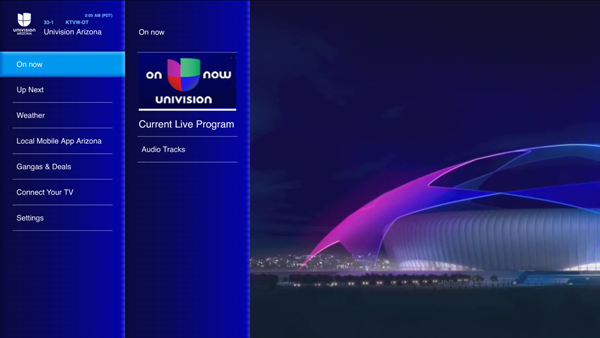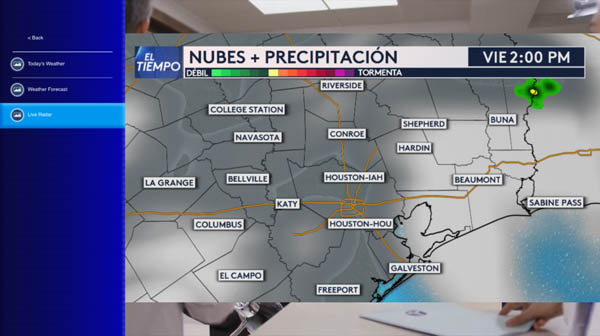
Broadcast television has traditionally been a prix fixe affair. A bunch of people shoot some video, slice it, stich it, and present it to you on your large screen TV to sit back and savor. If what appears doesn’t suit your palette, well, you can change the channel. Traditional broadcast TV has also been a largely lean back, consumptive experience without any chance to interact with or steer the program.
All that could change with ATSC 3.0 (aka NextGen TV).
ATSC 3.0 allows programs to consist of audio, video, and an application. The application could be something as simple as an overlay displaying a program’s description or some director’s commentary. It could also be a rich experience allowing you to pick one of several audio or video tracks, monitor for and display alerts for your favorite sports team (which you can then select for related content), or order for 30 minute delivery that ever-so-mouth watering pizza you’re watching someone else eat on the big screen.
Taken to the extreme, the application and the interactivity and personalized experience it provides could become the primary programming experience. Consider scenarios where the application renders nearly all of the audio and video – either using broadcast-delivered resources and the televisions’ GPU or cloud-based engines akin to cloud gaming services. We start to get into the realm of Star Trek “holonovels”, or the modern day equivalent of Zork (for those you old enough to remember that very early interactive game!)
Returning to today’s state of affairs, the most commonly mentioned uses of ATSC 3.0 broadcast apps has been targeted advertising. This is somewhat ironic as it has rather limited appeal to most viewers, who would rather not see commercials at all. There is some potential there, of course. For example commercials can be a way to discover upcoming movies (back in the pre-pandemic days when going to theaters was A Thing) or new products (such as new M&M’s flavors!) But the probability that targeted advertising would serve up appealing advertisements at a rate that would cause us to actually want to watch commercials seems rather low.
More interesting to viewers might be the use of applications in educational, news, or sports programming. How often have you heard, “And to find out more about how M&M’s are made visit our website at dark.chocolate.com” while watching a show? What if instead an icon could appear on the screen that could take you directly to that additional information, all presented in a UI tailored for a ten-foot experience?
What if instead of watching a news broadcast as its aired, you could select which segments you’d like to watch? Or what if the news app created a playlist of segments based on preferences you’ve indicated, and created your custom news broadcast from segments pushed by the broadcaster to your TV in combination with additional news segments available via broadband?
What if the app always showed your favorite team winning? (Ok that’s not likely to happen. But we can dream can’t we? Perhaps we could settle for game highlights that showcase your team doing well. Unless you’re a Jaguars fan. Even the best app might be challenged there…)
And what if educational and informative programming came in forms that engaged young viewers? How much more would they retain if a program included simple game components reinforcing the program’s subject matter? What if they could seamlessly jump to online assets supplementing the primary audiovisual programming? And what if courseware could be pushed to televisions so students with limited broadband access wouldn’t miss out of classes during pandemics?
All of these What Ifs are very much within the realm of possibility today, in some cases with minimal changes to the content production and management flows. For example newsrooms already transitioning to provide content via mobile apps or their web sites are in good positions to supplement their broadcast newscasts.
Applications have the potential to transform the broadcast television experience, and hopefully we’ll start to see content utilizing those apps in the years to come. For now, we can see the first steps toward that future in the Univision application from the Phoenix Model Market.

When the application is available a badge is displayed on screen. Pressing the right arrow launches the app. The badge disappears after a few seconds, but the right arrow will continue to launch the app.

The man menu showing guide information.

Weather radar images rendered by the application over live TV.
